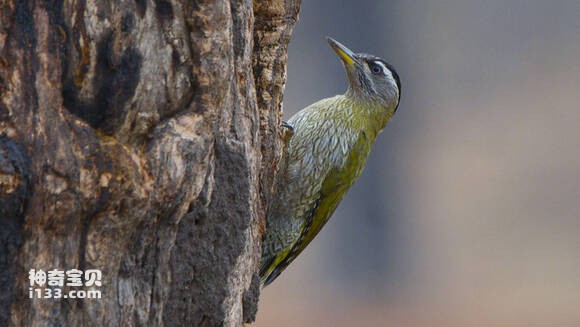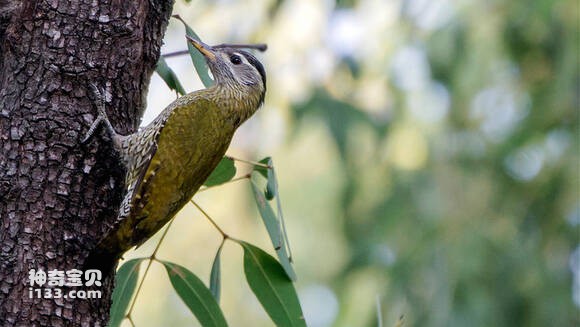Picus xanthopygaeus
IUCN
LCBasic Information
Scientific classification
- name:Picus xanthopygaeus
- Scientific Name:Picus xanthopygaeus,Streak-throated Woodpecker
- Outline:Climbing birds
- Family:
Vital signs
- length:No textual research information is available
- Weight:No textual research information is available
- lifetime:No textual research information is available
Feature
Distribution and Habitat
The green woodpecker is found in the Himalayas, India, southwest China and Southeast Asia. It is a rare resident bird in the open lowland forests of western Yunnan, China.
The lepidothroated green woodpecker mainly lives in open forests in the low mountains and plain areas below 1500 meters above sea level, and also occurs in bamboo forests, orchards and secondary forests. Often alone in the tree activity, but also often to the ground activity and foraging. Live in open mountain birch forest, bamboo forest.
Appearance
Male adult: red on top, sometimes with orange tips on the back of the head, black on the occipital; Back and wings covered with feathered grass green, sometimes yellow, sometimes more olive; Waist bright yellow, rarely rendered orange; The primary feathers are dark brown, with white spots on the base of the outer and inner pinna; The innermost secondary feathers were dyed green with faint greenish-yellow stripes, and the outer feathers gradually became the same color as the primary feathers. The tail feathers are greenish brown, there are not obvious white spots at the base, the outermost tail feathers are light brown, and the whole feather has broad markings; There is a white brow line from eye to pillow, and a black brow line above it; First dark yellowish-white; The ear feathers are grayish-brown with whiter stripes; Pale cheeks with indistinct black longitudinal stripes; Chin and throat yellow-gray, with white longitudinal lines; The front neck and chest are more green, with less o
Details
The species is known as Picus xanthopygaeus and street-throated Woodpecker without subspecies。

The scaly-throated green woodpecker often travels to the ground. It mainly feeds on animal food such as ants and insects. The pecker is a climbing bird with sharp claws on each toe, which are suitable for grasping trees; The stem of the tail feathers is hard and straight, and it can support the tree trunk with its tail feathers, helping the feet to support the weight. So woodpeckers can not only climb trees, they can also sometimes climb in a circle around the trunk. In the process of climbing, the woodpecker uses a stiff beak like a chisel to tap the wood rapidly, making the tree sound "good! Benedictine! Benedict!" The sound of... If a worm is found somewhere in the trunk, the woodpecker clings tightly to the tree, pecks through the bark with its beak, and thrusts its long, hooked tongue into the tree to draw the worm out and eat it。

The breeding season of the green woodpecker is from April to June. Nest in a hole in a tree. The eggs are white, oval and 26-27 mm ×20-21 mm in size.

Listed on the International Union for Conservation of Nature (IUCN) 2012 Red List of Threatened Species ver3.1 - Not Threatened (LC).
Protect wild animals and eliminate wild meat.
Maintaining ecological balance is everyone's responsibility!








